Shannon V. OKeets
Posts: 22095
Joined: 5/19/2005
From: Honolulu, Hawaii
Status: offline

|
I occasionally get asked as to how MWIF differs from WIF FE. Here is the heart of section 10 of the Players Manual, which answers that question (list compiled by Patrice).
===
10.5 Deviations
Though few in number, there are places where RAC distinctly deviates from RAW. The use of the unified world map is far and away the most important. Most other deviations are handled as optional rules. Still, there are some places where I decided to make changes to exploit the capability of the computer. For instance, the computer can generate an infinite number of generic counters, so there is no counter-imposed limit on the number of partisan units. Nor are the US Entry chits drawn from a finite chit pool, but rather from an infinite pool according to a statistical distribution.
The decision making for converting RAW to RAC involved dozens of people and for the most part was based on group consensus. Although, of course, I had the final say, so all errors are mine.
Here is a complete list of the Deviations in RAC:
1.2 Scale
Units
MWIF permits an unlimited number of: partisans, fortifications, factories, and infantry-type divisional units. The last is an optional rule which has important restrictions.
1.3 Markers
You are not limited by the number of generic units in the game except for synthetic oil plants. This includes unlimited: pilots and offensive, US entry, and neutrality pact chits.
2.1.2 Sea areas
The hexside northeast of Amsterdam is a canal hexside but it can not be used for naval movement.
2.3.1 Stacking Limits
Any and all hexsides of a land hex can be fortified, but only one fortification per hexside.
2.5 Control
Initial hex control
To determine start lines for the other campaigns use the toggle switch for turning on flags. Every hex will then display a flag indicating which major power controls the hex. At the start of a game, your major power controls all hexes within its home country borders, except any hexes flagged as belonging to the enemy. Again, if you are not sure who controls what, the flags indicating hex control should be toggled on. There are many changes to the non-European parts of the world. For example, North Borneo has been split into 3 separate territories, all of which are controlled by the Commonwealth in 1939: Sarawak, British North Borneo, and Brunei.
Changing control
Starting communist Chinese cities, when playing with the optional rule for additional Chinese cities, are: Lanchow, Sian, Yennan, Sining, Tianshui, Ningsia, and Tungkwan.
9.2 How to declare war
The player is given the opportunity for making some special decisions during the DOW on Minors subphase: Finland Borderlands and Bessarabia claims by the USSR, Occupy Greenland Iceland and Occupy Northern Ireland by the US, Close the Burma Road by Japan, Add Polish units by the Commonwealth and Add Interned Units. The DOW on Minors subphase is also when a player can announce he is breaking a neutrality pact.
9.4 US entry
Attempting to Declare war
Other players are informed how many chits were needed. The US player decides exactly how many are reported if a range of possibilities exists.
9.5 Neutrality pacts
Effect of neutrality pacts
Once a pact is broken, both major powers remove the entry markers they have placed on their common border (see below) from the game.
11.7 Strategic bombardment
Damaged factories are shown as black stacks.
11.10 Rail movement
Factories
For the USSR, an additional restriction applies. Either both the enemy in-supply land unit and the moving factory’s city of origin are in European USSR or they both are in Siberia (eastern USSR). Similarly, either the destroyed factory and the moving factory’s city of origin are both in European USSR or both in Siberia. The destination for the moving factory can be anywhere in the USSR. Here the European USSR and Siberia are defined by the demarcation line running north-south, three hexes to the east of Stalingrad.
Limits
The number of hexes the unit traverses determines the number of rail moves it expends as shown in the following table:
Hex Distance Land or Aircraft Unit Factory Unit
1 - 60 hexes 1 rail move 2 rail moves
61 - 120 hexes 2 rail moves 3 rail moves
121 + hexes 3 rail moves 4 rail moves
11.16.5 Resolving attacks
Choosing combat tables
If units from different major powers (on the deciding side) might take the losses, the major power with the most units involved in the combat chooses.
13.1 Partisans
Getting partisans
There is no die roll to select a row on the partisan table. Instead, each country has a probability of partisans appearing as a value in the data for the country. The probability of partisans appearing in each country is the same as in the table. However, a separate random number is generated for each country and tested against the probability of partisans appearing in that country. The result is that partisans might appear in more than 8 countries.
Setting up partisans
Set up partisans that are drawn randomly from a fixed distribution that is redefined annually. They are drawn simultaneously for all major powers and set up simultaneously. After all partisans have been placed, the effects upon any overrun hexes are implemented one hex at a time.
13.2 Entry markers
New markers are added to the marker pool at the start of each year, which changes the distribution from which a marker is randomly drawn.
13.3.1 US Entry markers
The regular entry markers drawn have no effect on the markers drawn for neutrality pacts.
13.3.2 US entry options
Other players are informed how many chits were needed. The US player decides exactly how many are reported if a range of possibilities exists.
13.6.5 Building units
When units are randomly drawn, you do not see the actual units selected until after all your production decisions are final.
13.7.3 Mutual peace
The area ceded by the USSR is everything east and south of hex row 46 and hex column 155, inclusive, plus the 3 ports Okhotsk, Magadan, and Petropavlovsk.
14.2.1 Fighters
Combat air patrol (CAP)
CAP may only be flown for hexes where an enemy attack is possible. For example, you may not fly CAP during the port attack phase over an empty port.
14.4 Carrier air units
If the carrier air units are flying from a land hex, they can only fly rebase missions.
22.4.7 Siberians
Siberia is defined as that part of the USSR which is east of the north-south demarcation line running 3 hexes east of Stalingrad.
22.4.9 Fortification units
The gearing limits for fortifications is +3 per turn. For example, if you built 2 fortification hexsides in the previous turn, you could build up to 5 in the current turn. All six hexsides can be fortified, but, regardless of type, only one fortification is permitted per hexside.
22.4.15 Chinese Warlords
Warlord units are treated like any other unit for all purposes except that no Warlord unit may move nor advance after combat more than 6 hexes from its home city. They can attack from that 6th hex to a hex where they could not move to, but could not advance after combat.
22.4.17 Heavy weapons units
Not part of MWIF product 1.
22.4.18 Air Cav
Not part of MWIF product 1.
_____________________________
Steve
Perfection is an elusive goal.
|
 Printable Version
Printable Version





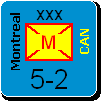

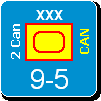




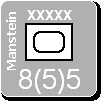


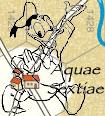




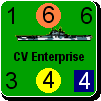




 New Messages
New Messages No New Messages
No New Messages Hot Topic w/ New Messages
Hot Topic w/ New Messages Hot Topic w/o New Messages
Hot Topic w/o New Messages Locked w/ New Messages
Locked w/ New Messages Locked w/o New Messages
Locked w/o New Messages Post New Thread
Post New Thread